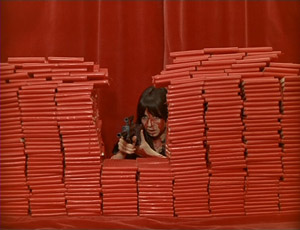“I am looking at the eyes that looked at the Emperor.”
—Roland Barthes, La Chambre claire
1.
For a particular type of cinephile from my generation—those of us born in the early ’60s and raised on a strict diet of left-leaning, somewhat Eurocentric art and culture—the physical act of seeking out and consuming great or hallowed or mythical films was as obsessive as our need to experience these films, when and if we found them.
When I say physical, I’m talking about the rumors traded among cinephiles, the stories and the clues. We wrote letters to long-forgotten crew members of neglected masterpieces and arranged meetings in difficult-to-pronounce European cities still shrouded behind the Iron Curtain. We sent money orders or contraband to shady PO boxes in hopes of hitting the mother lode. (That’s how I got my hands on Bergman’s Merry Widow script, crafted as a showcase for Barbra Streisand and set aside when it could not be financed.) Did Jacques Rivette’s twelve-hour-and-forty-minute version of Out 1, noli me tangere, supposedly screened at Le Havre in 1971, really exist? Could sequences from the abandoned version of Werner Herzog’s Fitzcarraldo, the one starring Jason Robards and Mick Jagger (before Robards had a massive heart attack and Klaus Kinski replaced him), be bought on black-market videotape? Where could we find films of the Marxist couple Straub-Huillet with English subtitles when the filmmakers themselves had sought to keep their work free of the textual residue of the despised Anglo-American market? And where was Terrence Malick sleeping?
I’m also talking about dark and damp basement cinemas in New York, Paris, Rome, Stockholm, Berlin, and London, places like the Carnegie Hall Cinema, the Cinema Village, and the Notting Hill, where double features were the order of the day. They were cheap and they were brilliantly programmed and we flocked to them in droves. Sometimes you walked up three flights to get to these theaters but they still felt subterranean. You could buy candy and drinks and there was always a smoking section. It was a fetid, human experience.
You could also have a very different relationship with a film depending on where and with whom you watched it. An audience at a university cinema in L.A. had a solemn, nearly funereal reaction to Pasolini’s Salò, based on Sade’s 120 Days of Sodom (they seemed uncertain whether they had just witnessed a film or a crime); later, I watched the same film at the Accattone in Paris with an audience that couldn’t stop laughing.
I watched my first Philippe Garrel film, Les Hautes solitudes, starring Jean Seberg and largely based on...
You have reached your article limit
Sign up for a digital subscription and continue reading all new issues, plus our entire archives, for just $1.50/month.
Already a subscriber? Sign in





